Certain auto detailing products do not always have to be purchased from shops. You can opt for their homemade substitutes. Tire shine is a good example of this. For many vehicle owners the biggest reservation about using commercial tire shine is the cost, so homemade tire shine might seem like a good alternative. But which product will give the best shine and protection for your tires? Let’s evaluate both of them.
The most common household product used as tire shine is oil – castor, lemon, vegetable, olive, baby oil, and even brake fluid. Natural oils like castor and lemon are said to nourish the rubber without drying it. Furthermore, oil will give your tires a wet, glossy look much like solvent-based tire shine. However, the stickiness of oil will result in your tires attracting even more dirt than usual. The result is hard to clean grime and dirt coated tires in less than a week.
Also, after dabbing the tires with oil if you do not wipe off the excess product, it can sling on to other parts. For instance, a product like brake fluid can do a lot of damage to the paint. Another negative of using oil is it does not provide UV protection to your tires, while water-based commercial tire shine have agents that block UV rays.
An important thing to remember is to never apply tire shine on the tire tread, especially oils. They will make the tread slippery.
If organic living is important to you, then homemade tire shine is a good choice. Substances like castor oil will not harm the environment or you in anyway.
Some commercial tire shine products like Meguiar’s and Turtle Wax are priced over $20. A homemade solution is very cheap if you do the math and make the comparison.
Here’s a video on how to make an easy homemade tire shine:
There are two types of commercial tire shine: water-based, which is biodegradable and solvent-based, which is non-biodegradable. Stay clear from the latter because these products contain petroleum distillates that are harmful to rubber. Choose a water-based product instead because this environmental friendly solution will give a nice satin finish to your tires. This shine will last longer as the solution is also non-greasy, so it won’t attract dust and grime like a greasy solvent-based product would do. Additionally, as mentioned above, water-based tire shine have UV ray blocking properties so it will provide additional protection for the tires.
Solvent-based tire shine can even threaten your health. The harsh chemicals can cause dangerous skin ailments and the vapors emanating from them can cause a variety of respiratory problems. A benefit of using homemade tire shine is that you don’t have to worry about chemicals.
A benefit of using homemade tire shine is that you don’t have to worry about chemicals.
Many commercial tire dressings are also highly flammable so using them means you have to take extra precautions. You should dispose the empty cans and bottles according to the method that is mentioned on the product label.
A good tire shine will give you long lasting results without causing damage to the tires or other elements of the car. Homemade tire shine is a decent alternative but a commercial water-based tire shine will give better results and protection. Because the results will last longer than that of a homemade tire shine, the money spent on the product is actually a worthy investment.
Enjoyed this post? Sign up for our newsletter to receive more valuable tips, ideas, coupons, and extras!
NASCAR may have been founded around moonshine, but those early days of running “white lightning” are long gone. Nowadays, auto enthusiasts prefer to run a different kind of shine, and unlike those hot-rodding bootleggers, this stuff won’t force you to run from the fuzz.
Nowadays, auto enthusiasts prefer to run a different kind of shine, and unlike those hot-rodding bootleggers, this stuff won’t force you to run from the fuzz.
Homemade DIY alternatives are as numerous as crashes at Talladega, and nowhere is this more apparent than in the world of car detailing, with liquid car detailing solutions leading the pack. So is it possible to concoct homemade tire shine with a bunch of random ingredients you’ve got lying around the house? It’s not like you have to worry about a peeling clear coat or hard water spots when caring for tires. So why not get play “mad scientist,” and mix-up a potent shine of some sort?
Now before we get too “antsy in the pantsy” over talking tire shine, let’s get one thing straight: There’s a reason why the tire dressing business is so fucking profitable. For decades, the world’s wealthiest chemical companies have spent an asinine amount of cheddar on researching and testing tire shine products, just to guarantee that they work.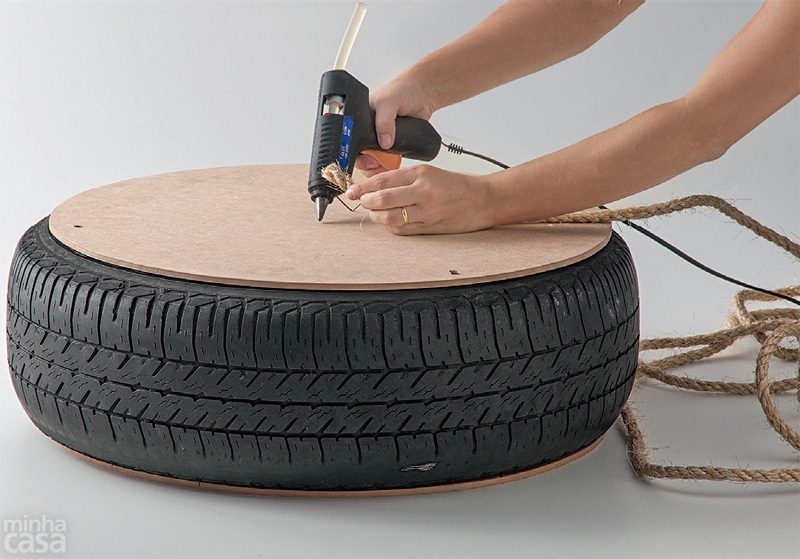
That being said, please don’t get all hot under the collar when your homemade tire shine solution isn’t lasting nearly as long, or bringing the thunder like a $1 billion dollar investment from 3M. You are here because your cheap ass is trying to make due with what you’ve got, and you’re curious to see if all those post-apocalyptic survival supplies you’ve been hording in your auntie’s garage will cut the kimchi.
Well fear not good citizen! The following three, relatively decent, super simple homemade tire shine recipes are here to make your quest for frugality a reality. While we’re at it, I guess we might as well address some of the common issues associated with homemade solutions of this caliber, and maybe even throw in a brief FAQ section, just for shits-and-giggles. Onwards!
3 of the Best Homemade DIY Tire Shine Solutions
While a lot of people have their own homemade tire shine recipe (tortoise saliva and turpentine anyone?), the following three oddball entries are generally accepted as the best, and safest solutions.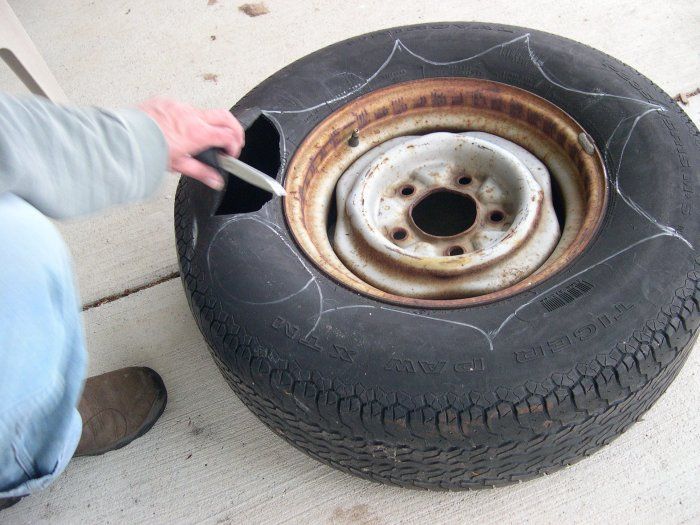 However, just to err on the side of caution, we strongly suggest using protective gear such as nitrile gloves and eye protection when concocting an automotive “tincture” on one’s own. The last thing we want is for you to end up in the hospital because you just discovered that you are allergic to any combination of the following ingredients.
However, just to err on the side of caution, we strongly suggest using protective gear such as nitrile gloves and eye protection when concocting an automotive “tincture” on one’s own. The last thing we want is for you to end up in the hospital because you just discovered that you are allergic to any combination of the following ingredients.
It may sound like a frilly Hipster highball, but when you combine castor oil and alcohol with a little auto shampoo and water, the natural shine of the rubber and synthetic materials contained within modern tire compounds really pops. Here is what you’ll need to make this oddball “cocktail.”
To whip-up this magical mixture, you’ll first blend the automotive shampoo and water to wash the tire.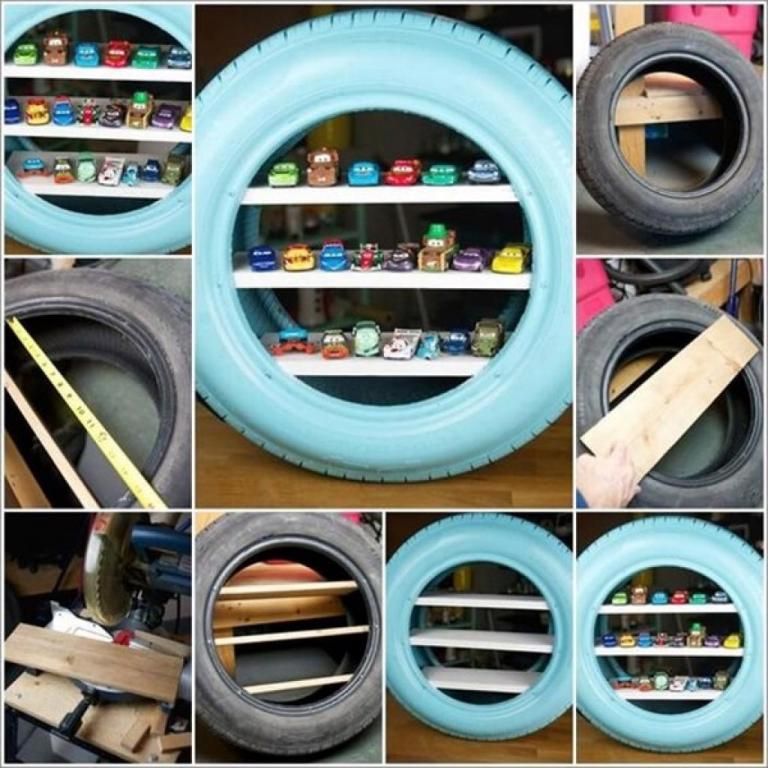 Use a tire brush to get into all of those little grooves and textured surfaces on the outer sidewall.
Use a tire brush to get into all of those little grooves and textured surfaces on the outer sidewall.
After scrubbing the rubber, use some rubbing alcohol to further clean the tire. The alcohol essentially acts as an extra step to further remove contaminants from the tire’s sidewall, and should be used sparingly, as it can dry out rubber rather quickly. A modest splash of rubbing alcohol on a microfiber towel or applicator pad will be all that is needed to wipe the entire tire clean.
Once the tire has dried, splash some castor oil on a different microfiber towel or applicator pad, and hit every square centimeter of the tire’s sidewall in a circular motion until a sheen can be seen from every angle.
Out of all of the products on today’s list of homemade tire shine formulas, baby oil has to be the cheapest and slipperiest. Not only does this slick mineral and aloe-based oil add insane amounts of shine to anything it touches, but the infusion of Vitamin E has caused it to become prized for its ability to nourish cracked and drying surfaces, and that includes automotive rubber.
Here is what you’ll need:
First, pour the 1/2 cup of water into a bucket, add the baby oil, and mix with three drops of automotive shampoo. Pour the solution into a spray bottle and shake it up. Spray the homemade tire shine directly onto the tire , as well as onto a clean microfiber towel. Once the tire is completely covered and slick-looking, allow the solution to sit for a minute or two before wiping it away with a separate microfiber cloth.
While the smell of burning rubber may excite fans of drag racing, most people abhor this pungent automotive aroma.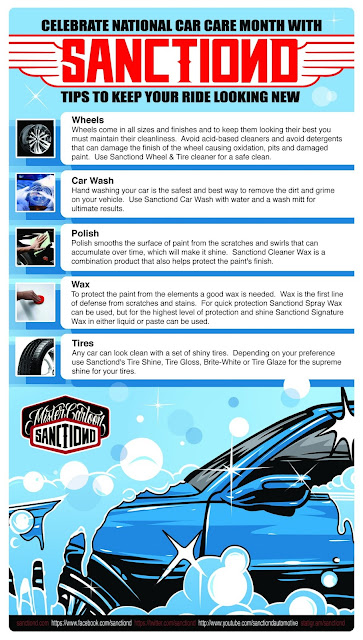 Try laying a citrusy smackdown on UV damage and cruddy contaminants with the dry-rot-reducing power of a lemon oil tire dressing solution. When blended properly, this concoction acts as both cleaner and conditioner.
Try laying a citrusy smackdown on UV damage and cruddy contaminants with the dry-rot-reducing power of a lemon oil tire dressing solution. When blended properly, this concoction acts as both cleaner and conditioner.
First, pour the automotive shampoo into a bucket and then add the water along with the Borax. Stir the concoction until fully mixed, adding the lemon oil last. Once fully blended, dip the brush in the solution and clean the tire, reapplying fresh amounts of solution as necessary. Rubber thoroughly scrubbed, break out a clean microfiber towel and conduct a final, dry wipe down.
A Few Other “Unique” Homemade Tire Shine OptionsNaturally, there are a ton of other homemade tire shine options out there, most of which rely upon common household products. The issue, is that from a shiny tire’s viewpoint, most of these ingredients really aren’t all that great when it comes to durability and visual appeal. So take the attached video with a glob of grease, because the aforementioned DIY tire shine solutions are about as good as it gets.
The issue, is that from a shiny tire’s viewpoint, most of these ingredients really aren’t all that great when it comes to durability and visual appeal. So take the attached video with a glob of grease, because the aforementioned DIY tire shine solutions are about as good as it gets.
In order to help you remember the core components of routine tire care, we suggest following the classic T.I.R.E. acronym, for it still rings true today. This will not only help keep those sidewalls looking spiffy, but potentially prolong the life of the tire compounds themselves, and therefore make your windshield time all the more safe.
“T” is for TIDYThe easiest way for someone to keep their tires in good shape, is to clean them regularly. Washing away tire contaminants like grime, brake dust, pollution, and road salt helps remove the risk of this crud embedding into the rubber.
Washing away tire contaminants like grime, brake dust, pollution, and road salt helps remove the risk of this crud embedding into the rubber.
By keeping your tires tidy, and routinely applying a protectant, contaminants and UV rays alike become far less of an issue, as both are the core cause behind premature cracking and blowouts.
“I” is for INSPECT The old “penny test” may be a proven method for testing tread depth, but on many tire compounds this means you have reached a dangerously low level of grip. The top of Lincoln’s head on the US penny measures about 2/32nd’s of an inch, which traditionally means it’s time to replace a tire. Don’t wait until your tires reach this level, because your traction at this point will likely border on being dangerous.Automotive tires should undergo monthly maintenance checks, especially when routinely driven. This includes checking tire pressure levels, which should be done every other week, especially since these numbers fluctuate when there are dramatic changes in ambient air temperature.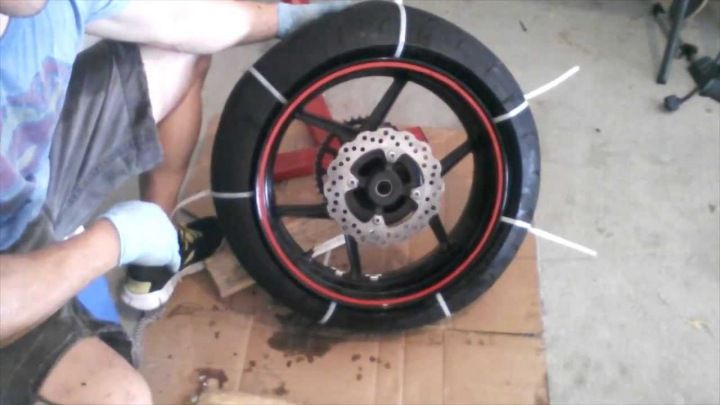
Inspecting tires for cracks, bubbles, or odd wear patterns should also be a routine, with a monthly, or bi-monthly basis being the norm. This will not only help you keep an eye on the condition of the tire compounds themselves, but by detecting uneven or unusual treadwear patterns, you will shine a spotlight on any suspension alignment issues. There is also the issue of improper tire inflation, which can lead to premature wear and potential blowouts.
“R” is for REPLACEMany car owners assume that if there is more than 2/32nd tread depth left on a tire, they’ll be totally fine. This is one of those outdated, shade-tree mechanic recommendations. By the time a tire’s tread pattern has worn this low, traction will have been reduced to a dangerously low point. Play it safe, and replace your tires when the rubber reaches Lincoln’s forehead on the US penny.
“E” is for EASY For those of you who are unfamiliar with tire lingo, this guide will help explain what all the numbers and letters on the sidewall of a tire means.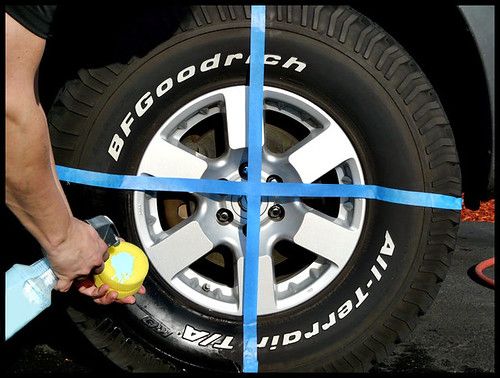
Having the right tires on your vehicle is just as crucial as routinely inspecting and maintaining them with a tire dressing cleaner. Keeping an adequate load weight, and not exceeding the tire’s maximum capacity is a core way to maintain tire integrity, as is ordering the appropriate tire size.
Overloading a vehicle, or specific areas of a vehicle (like the trunk or truck bed), puts a ton of strain on tires, as every tire compound on the planet comes pre-engineered to withstand a certain amount of pressure. So shop wisely, and know that any tires with the letters “XL” on their sidewall won’t be “extra large,” but strong enough to hold extra air, thus allowing them to carry “extra loads.”
Quick Tip: Don’t forget to check your spare tire every month. Nothing is worse than having a flat tire, and realizing that the doughnut is also low on air or damaged in some way.
Parting ShotsDry rotting tires or tire sidewall cracks are a commonplace, and often avoidable tire malady.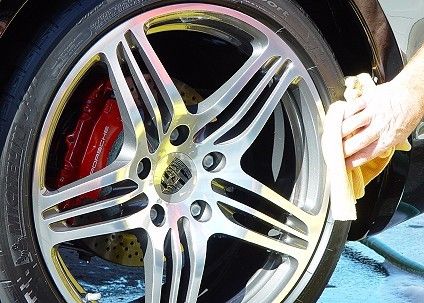 If your tires look like this it is time to replace them ASAP.
If your tires look like this it is time to replace them ASAP.While these homemade tire shine solutions are rather good at improving appearances and protecting sidewalls, extending longevity really boils down to protection, not enhancement. That is why the lemon oil shine option remains the preferred homemade method for accomplishing this vital step.
Just remember, automotive tire care is more than just applying a product or some homemade solution to a piece of rubber. In order to safely enjoy the joys of the open road, one must first inspect and then protect their tires. This rubberized consumable product is the only part of the vehicle that comes into contact with the ground. So take good care of these rolling pieces of rubber, and they will take care of you…
02/22/2018
Despite the objective importance of the spare tire, not all drivers always have it with them.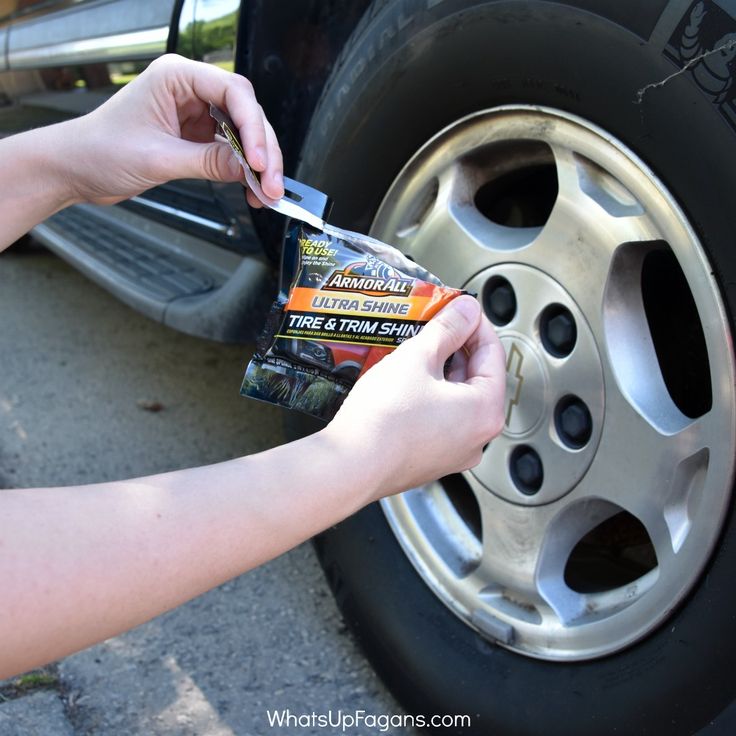 Some do not carry a spare tire out of hope or belief that their tires are invulnerable. Others deliberately take this step, as they stocked up with a special tool in advance, which, if necessary, can eliminate a tire puncture along the way. What else can be used and how to do it right? Let's figure it out.
Some do not carry a spare tire out of hope or belief that their tires are invulnerable. Others deliberately take this step, as they stocked up with a special tool in advance, which, if necessary, can eliminate a tire puncture along the way. What else can be used and how to do it right? Let's figure it out.
Contents of :
Conventionally, all methods for express tire repair can be divided into two categories:
Consider ways to restore a damaged tire on the road. The first three methods are temporary. The latter, with the right approach, allows you to completely restore the tire.
 e. preventive). A special sealing compound is pumped into all four undamaged tires. While driving, it is inside the wheel in liquid form. If the tire suddenly loses its tightness, then this composition, leaving together with the air, clogs the slot in a few seconds. This method is relevant if you have a long trip under time constraints.
e. preventive). A special sealing compound is pumped into all four undamaged tires. While driving, it is inside the wheel in liquid form. If the tire suddenly loses its tightness, then this composition, leaving together with the air, clogs the slot in a few seconds. This method is relevant if you have a long trip under time constraints. 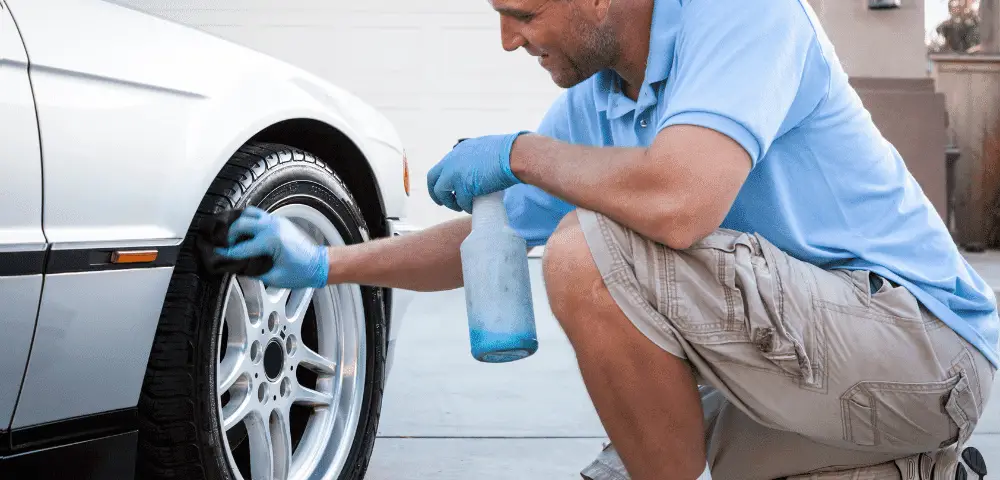
After removing the foreign object, the hole is processed with an awl with abrasive edges: this tool must be inserted into the puncture and cleaned and developed with intensive reciprocating movements several times.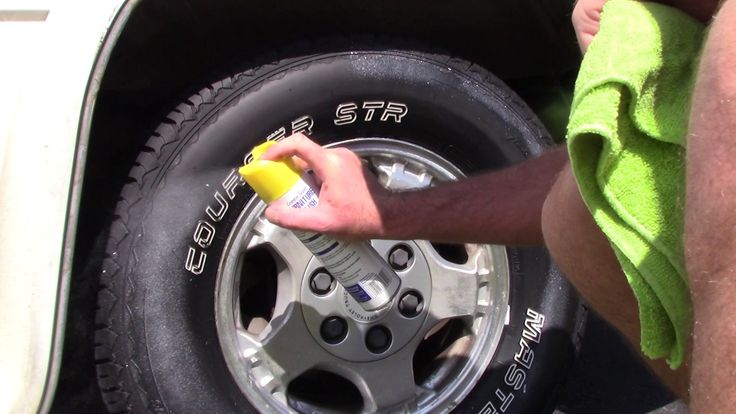 Then the raw rubber tow is removed from the package and inserted into the eye of the second awl so that both ends are the same length. The hole in the tire and the raw rubber is treated with an activator. Next, the awl is inserted into the puncture in such a way that small ends of the tourniquet, about a centimeter long, remain outside. After 5 minutes, the excess remaining on the surface is cut off. This method can also successfully eliminate small side cuts.
Then the raw rubber tow is removed from the package and inserted into the eye of the second awl so that both ends are the same length. The hole in the tire and the raw rubber is treated with an activator. Next, the awl is inserted into the puncture in such a way that small ends of the tourniquet, about a centimeter long, remain outside. After 5 minutes, the excess remaining on the surface is cut off. This method can also successfully eliminate small side cuts.
There is a technique that allows using wire and several bundles of raw rubber to get rid of even extensive side damage to tires. However, it is quite difficult to implement and not every driver will be able to implement it.
Consider a few well-known tools that are most widely used to repair punctures:
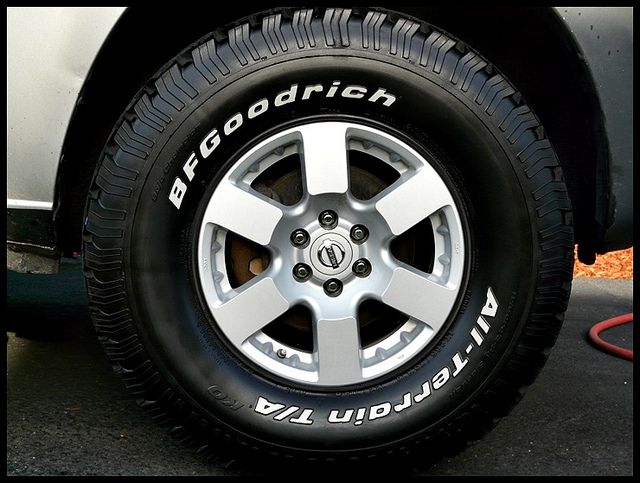 It works in the same way as most sealants: the container is thoroughly shaken, after that a hose is attached, and the contents from the container are completely pumped into the tire. The maximum diameter of the repaired hole is 4.5 mm. This is almost always enough to repair punctures caused by nails and screws.
It works in the same way as most sealants: the container is thoroughly shaken, after that a hose is attached, and the contents from the container are completely pumped into the tire. The maximum diameter of the repaired hole is 4.5 mm. This is almost always enough to repair punctures caused by nails and screws.
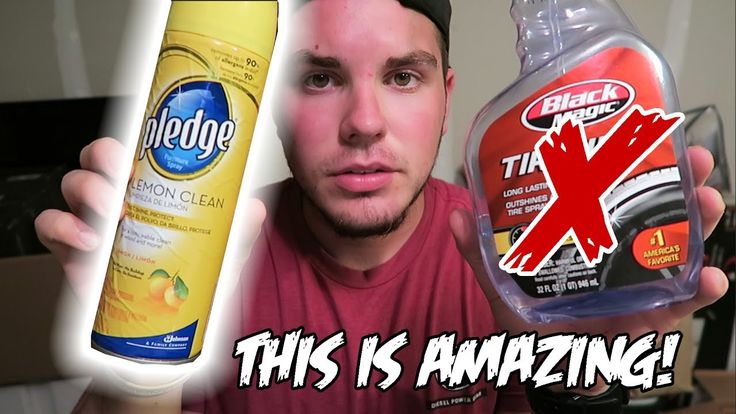
Our online store offers a wide range of tire repair products. You can order them through the TopDetal.ru website or by calling 8 800 444-75-16.
Also read on our website about the best liquid rubbers.
Back to the list
August, 2022 Category: Car bodyAuthor: lideradmin 0
Top 28 cars that do not rust for 2022 (brands, causes of corrosion) For a polished, but not treated steel structure, one rain is enough to start the process of metal oxidation. Availability…
How do I repair a damaged engine or chassis number?
Heading: Car bodyAuthor: lideradmin 0
How to restore a damaged engine or body number? Many motorists have heard of the Body Identification Number, or simply Vin.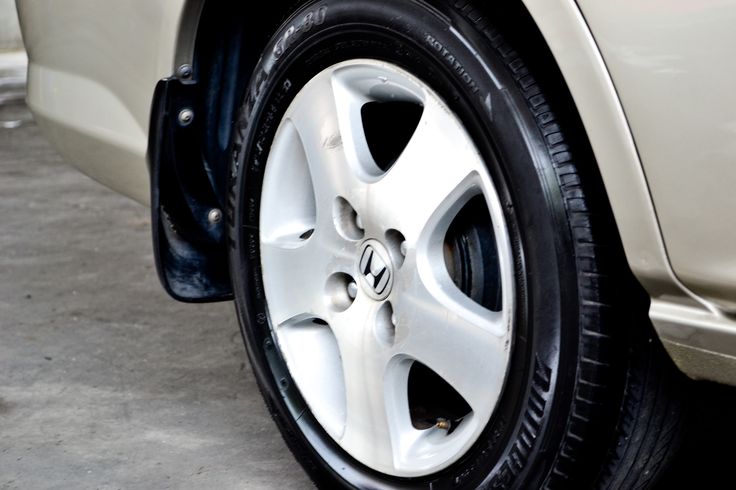 This article is devoted to the question of how to weld the number yourself ...
This article is devoted to the question of how to weld the number yourself ...
Sell a body for a car
Heading: Car bodyAuthor: lideradmin 0
Sell a body for a car We are ready to process your application and redeem the range of spare parts you offer on the day of contact. Redemption of a body for a car in St. Petersburg The body is ...
Welding of the car body: what and how it is better to carry out welding work
Heading: Car bodyAuthor: lideradmin0004 Car body welding: what and how best to carry out welding work Welding work on a car body may be required in two cases - severe wear due to corrosion and damage ...
Removing paint from a car
Removing paint from a car This article will introduce you to the different ways to remove paint from a car body.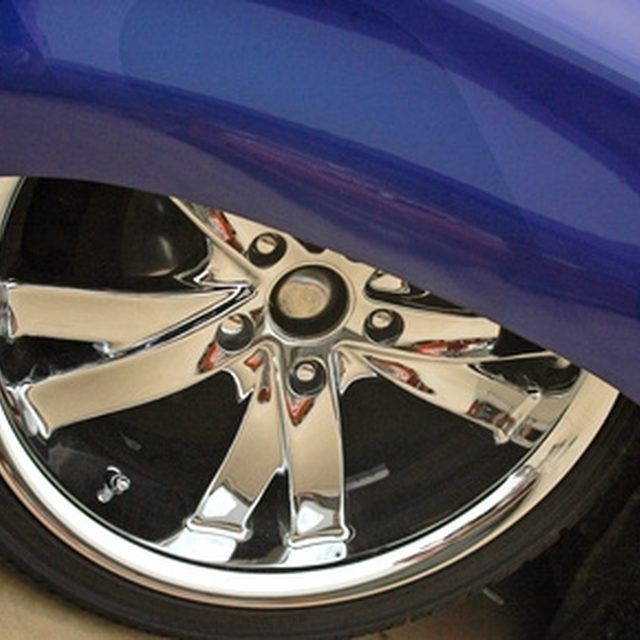 The process of paint stripping can be divided into two main categories - mechanical and ...
The process of paint stripping can be divided into two main categories - mechanical and ...
UAZ 3303, types and technical characteristics Tadpole
Heading: Car bodyAuthor: lideradmin Doors with sliding windows, wide axles "Spicer" with disc brakes, injection engine ZMZ-409, five-speed gearbox...
Is it possible to make a car yourself?
Heading: Car bodyAuthor: lideradmin 0
Can you make a car yourself? Description of the technology of the independent production of automobiles. Can you make a car yourself? What skills are needed for work, materials, subtleties of the process. Photo and video. Looking at…
3 real ways to save a car if the body has already begun to rust
The best way to treat a car from corrosion: TOP-9 best products